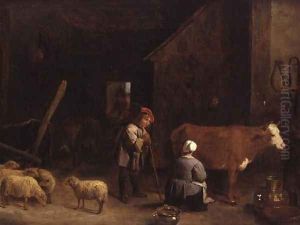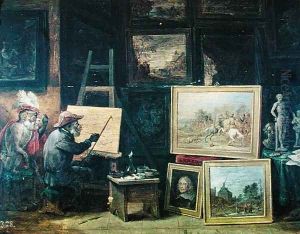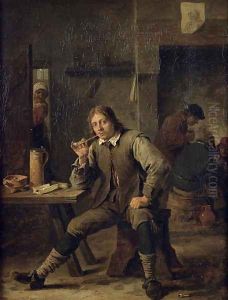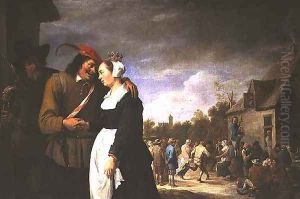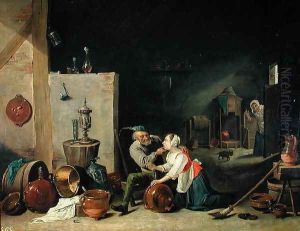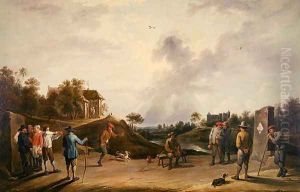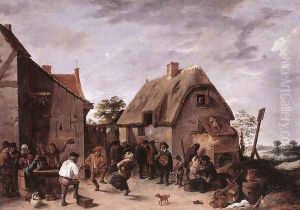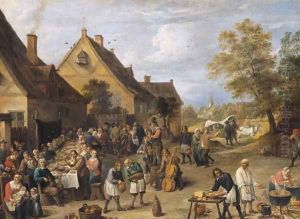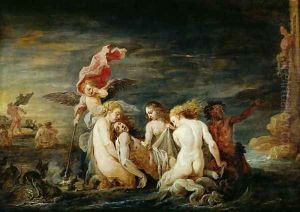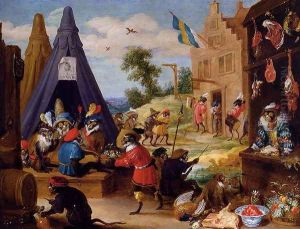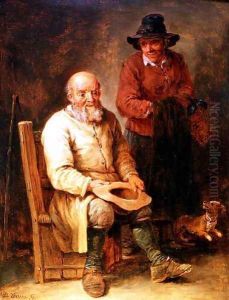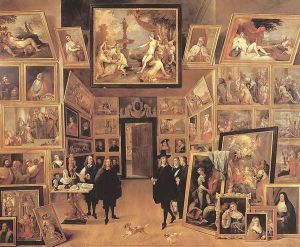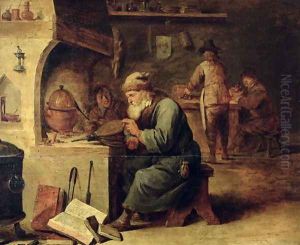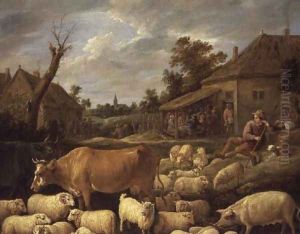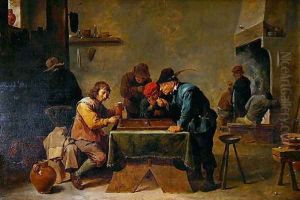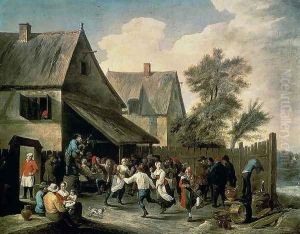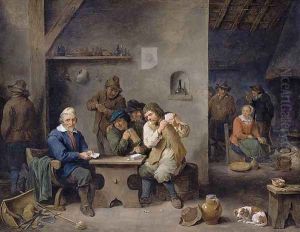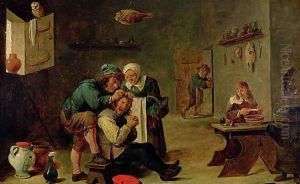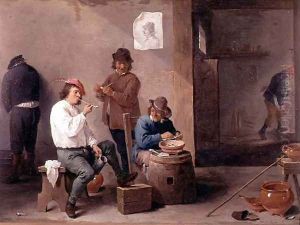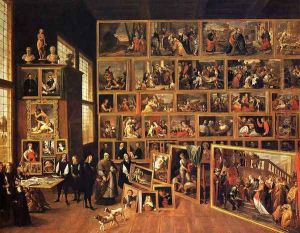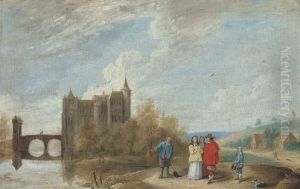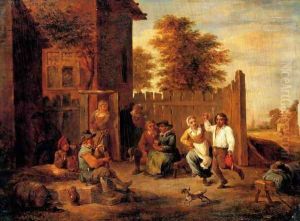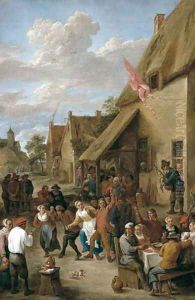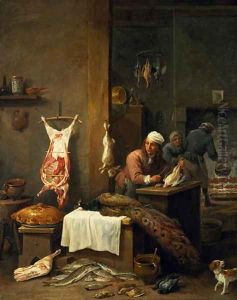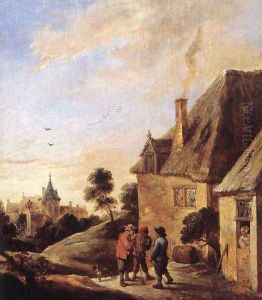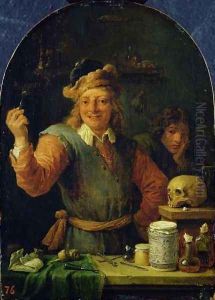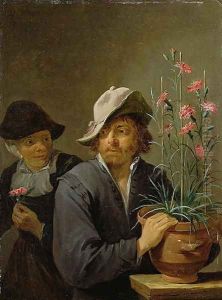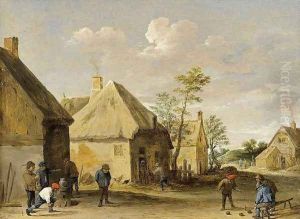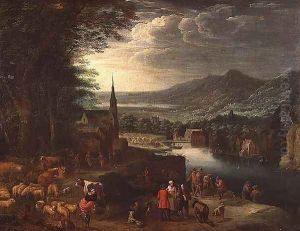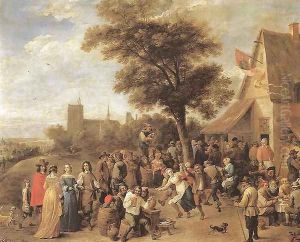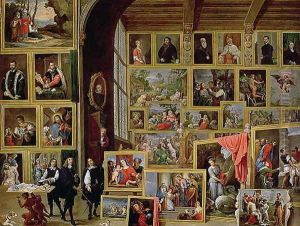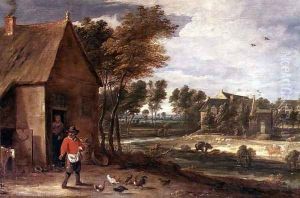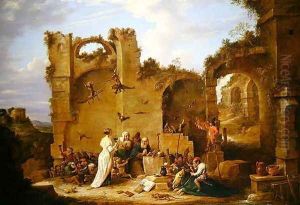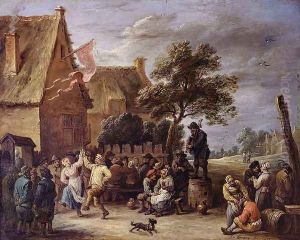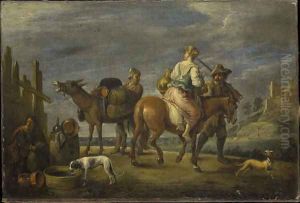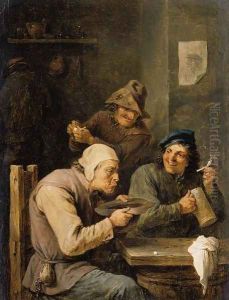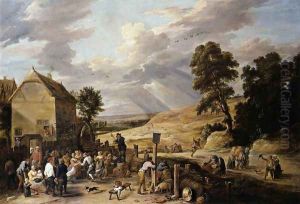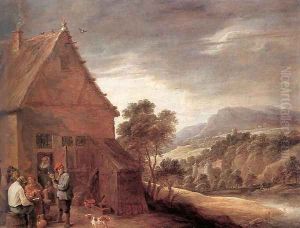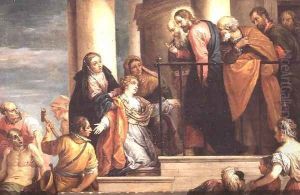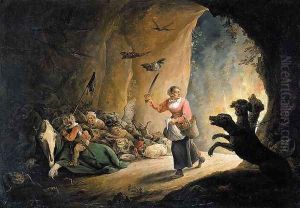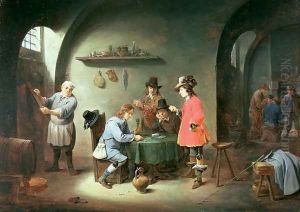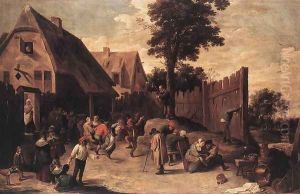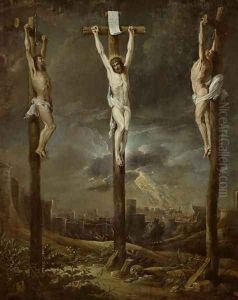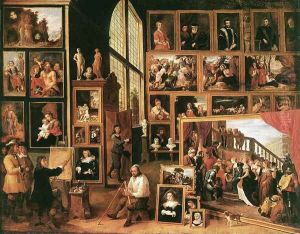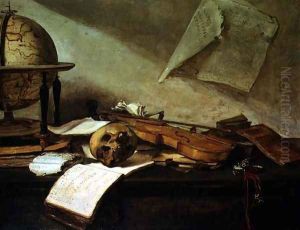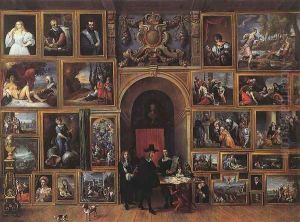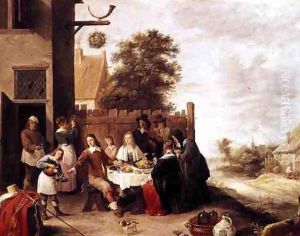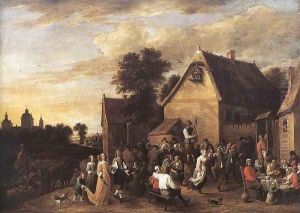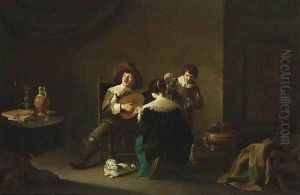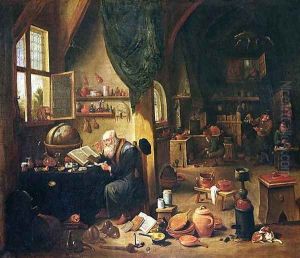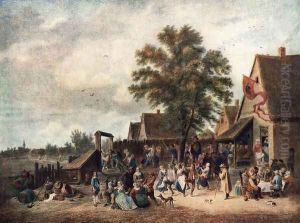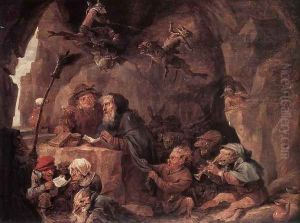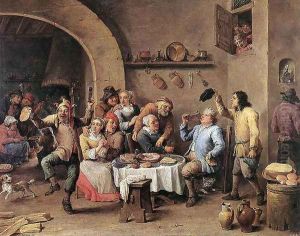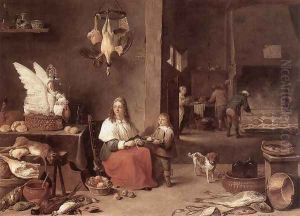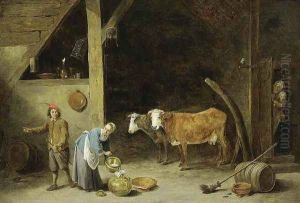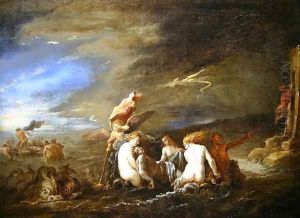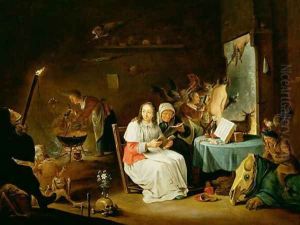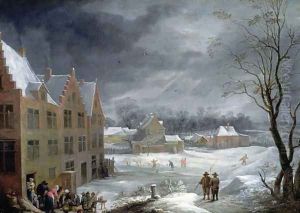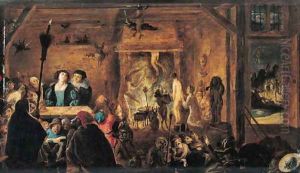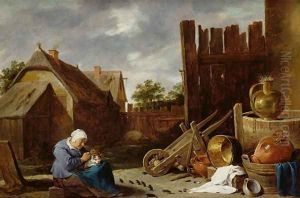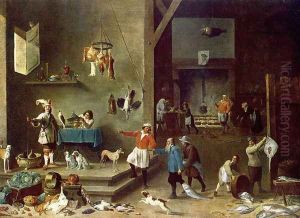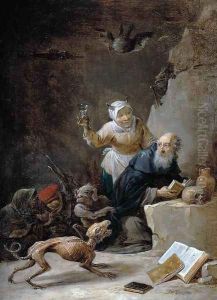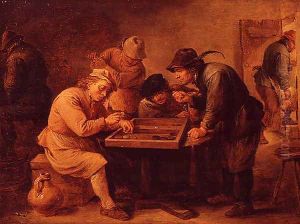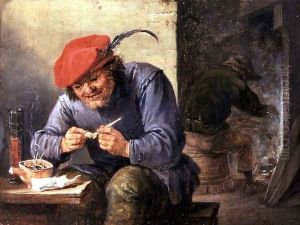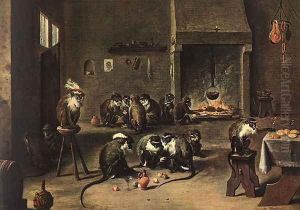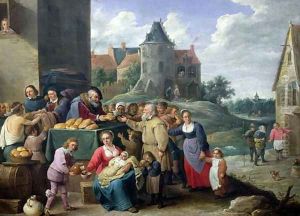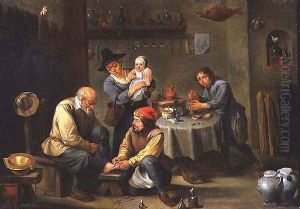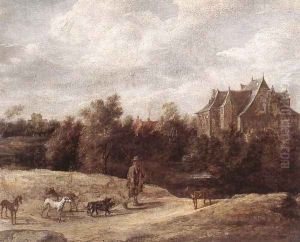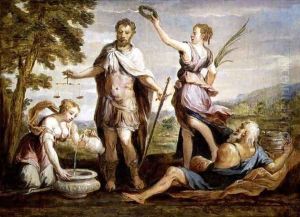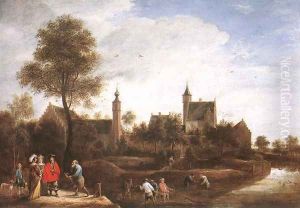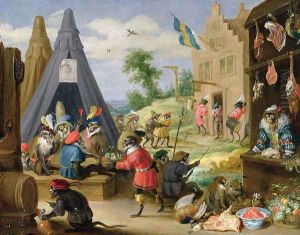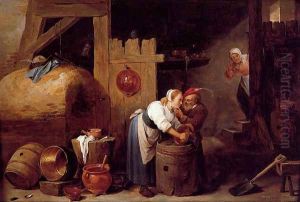David The Younger Teniers Paintings
David Teniers the Younger was a Flemish artist born on December 15, 1610, in Antwerp, which was then part of the Spanish Netherlands. He was known for his genre paintings of peasant scenes, works featuring alchemists and physicians, and for his landscapes and history paintings. His work is characterized by a lively and skillful depiction of the everyday life of his times, with a particular attention to detail and a sense of humor and satire.
Teniers was the son of David Teniers the Elder, who was also a painter, and under his father's tutelage, he began his artistic training. He later studied under other prominent Flemish artists such as Adriaen Brouwer. He became a master in the Antwerp Guild of St. Luke at a young age and was highly prolific throughout his career.
In 1637, Teniers married Anna Brueghel, the daughter of Jan Brueghel the Elder and the granddaughter of Pieter Bruegel the Elder, which connected him to another lineage of important Flemish painters. This marriage helped to establish his position in the art world even further.
Teniers worked for the governor of the Spanish Netherlands, Archduke Leopold Wilhelm, and later his successor Don Juan of Austria, as a court painter and curator of their collections. His role involved cataloguing, copying, and arranging the sales of paintings. He also painted several works depicting the archduke's gallery.
In his own compositions, Teniers often portrayed peasant life, tavern scenes, and village kermesses with a remarkable sense of realism and vitality, which made him one of the most famous genre painters of his time. He was also skilled in painting alchemical and scientific pursuits, which were popular subjects at the time.
Apart from genre scenes, Teniers was also known for his small-scale landscapes and religious works. He was adept at painting on copper, a medium that allowed for fine detail and luminous effects. His influence was widespread, and he had numerous students and followers. His sons David Teniers III and Abraham Teniers also became painters, though they did not achieve the same level of fame as their father.
Teniers's work was highly valued during his lifetime and remains so today. He was an extremely versatile artist, and his paintings exhibit a high level of craftsmanship and a keen observation of the human condition. His works can be found in many major museums around the world, including the Louvre in Paris and the Prado in Madrid.
David Teniers the Younger passed away on April 25, 1690, in Brussels. His legacy continues to influence the world of art, and his paintings offer a vivid window into 17th-century Flemish life.
